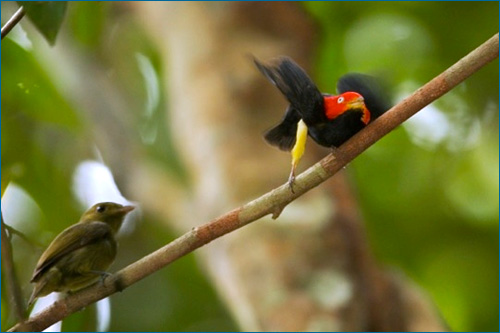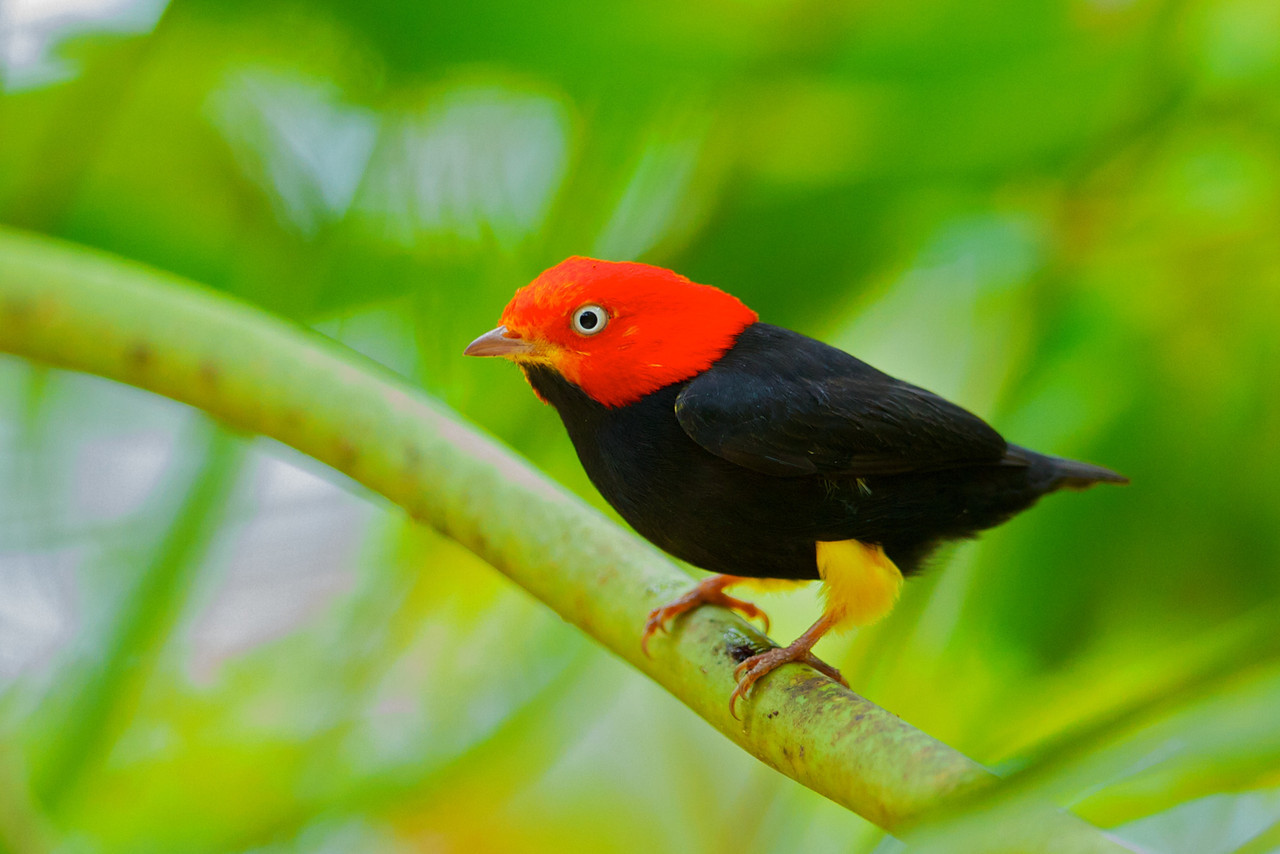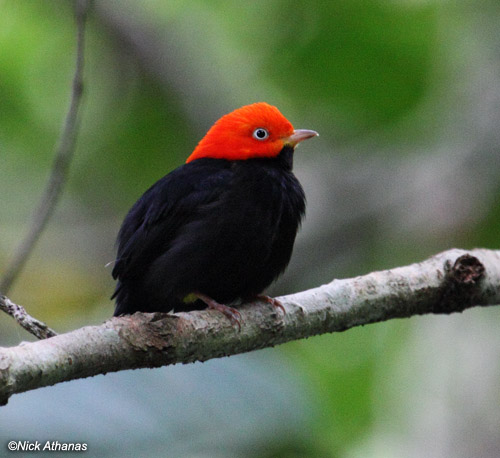
Pipra mentalis
SUBFAMILY
Piprinae
TAXONOMY
Pipra mentalis Sclater, 1857, Cordova = Cуrdoba, Vera Cruz,
Mexico.
OTHER COMMON NAMES
French: Manakin а cuisses jaunes; German: Gelbhosenpipra;
Spanish: Saltarнn de Capa Roja.
PHYSICAL CHARACTERISTICS
Sexes differ. Length is 3.9 in (10 cm). Males are velvety black
except for bright yellow thighs and pale yellow underwing
coverts, with a distinctive bright scarlet head. The shafts of the
flight feathers are thickened, and both thickened and curved in
the secondary feathers. The female is dull olive above. Males
have white eyes, females have brown eyes. The legs are dull
brown.
DISTRIBUTION
Western Colombia and western Ecuador.
HABITAT
Lower and middle understory of humid and wet forest.
BEHAVIOR
Lekking males gather in loose groups in low to middle forest
understory. The modified shafts of the rectrices and secondaries
produce mechanical wing snaps, and wing whirring and
rustling buzzes.
FEEDING ECOLOGY AND DIET
Small fruits and insects are taken during quick, sallying flights.
REPRODUCTIVE BIOLOGY
The female alone makes a shallow cup-shaped nest attached to
a horizontal branch fork from 5–10 ft (1.5–3 m) above the forest
floor. The clutch consists of two grayish buff eggs, with a
wreath of mottled brown around the large end.
CONSERVATION STATUS
Not threatened. Common in its preferred habitat.
SIGNIFICANCE TO HUMANS
Eco-tourists and birdwatchers enjoy seeing the males. Its image
has been used on postage stamps.
Other popular Animals
Photo Gallery of - Red-capped manakin




 Animalia Life
Animalia Life